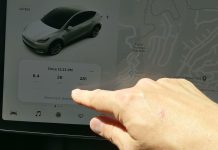Lots of questions come up when the subject turns to cars. Here are a few that come up often – along with some answers that may help: 
* Is it a good idea or a bad idea to buy a former rental (or cop) car?
Mixed bag! Most people would probably be fearful of acquiring a former rental/fleet car, thinking it was probably abused by not just one driver but many drivers. But while that’s possible, it’s not likely – with the exception of high-performance or sporty models that were rented by people specifically looking for a good time, not just a way to get from A to B. Meanwhile, the models that were rented for that – transportation – were probably just driven. Not driven abusively. And – important point here – rental cars are usually much better maintained than the average privately owned vehicle. They get regular oil and filter changes according to specific time/mileage intervals, for example. Sometimes, detailed records of the work done will be available. So, there’s that. Also, you can often get a great deal on a former fleet vehicle because the seller is eager to get rid of the car and probably has a half dozen others (or more) that have to go, too. It’s much less personal than when dealing with an individual private seller, who may be determined to get top dollar for his vehicle. The bottom line: Don’t rule out ex-rental/fleet vehicles; check out what’s available and whether it’s worth pursuing. You might get yourself a great car for a great price. 
* Is a diesel powered vehicle more economical than a gas-powered vehicle?
Maybe.
It used to be true that a diesel car, all else being equal, was a cheaper way to get around than a gas-powered, otherwise equivalent car. But a few things have changed in recent years. First, diesel fuel is more expensive than it’s ever been – and more expensive than gasoline. In part this is due to new “clean diesel” regulations that make the fuel more costly to produce. But the relevant point is that you pay more at the pump to fill up with diesel – in some areas, 20 cents a gallon or more. That’s a big difference that eats into the cost-benefit equation. Another factor is that current diesels are less fuel efficient than diesels of the past. The best you’ll see advertised in a 2012 model year passenger car diesel is appx. 42MPG on the highway. That’s good – but nowhere near as good as the diesels of 20 years ago, which could deliver 50 MPG or even more on the highway. The reason? New diesel-powered cars are quick – something no diesel-powered car of 20 years ago was. Most buyers seem to place a premium on acceleration rather than economy; few people seem willing to buy a car that needs say 15-20 seconds to reach 60 MPH, as something like an old (’70s-era) VW Rabbit diesel did. To be quick requires more power – and because modern cars are generally much heavier than the cars of 20-something years ago (to a great extent, in order to comply with government safety/crashworthiness standards) they require even more power to be quick. These factors greatly reduce the fuel efficiency of modern diesel engines – and the cars they are in. But, you can make the math work in your favor if you take advantage of the diesel engine’s longevity. The diesel combustion cycle – which relies on compression ignition rather than spark – is extreme and requires that diesel engines be made very tough. This is one reason why (assuming decent treatment) they can and often do last much longer than a gas engine – sometimes 300,000-plus miles before requiring major work. If you’re willing to keep the car that long, which will enable you to avoid having to buy a new car for longer, then buying a diesel can be good choice, money-wise. 
* When does it make sense to reduce insurance coverage to state minimums?
This one’s easy. The insurance companies have an internal rule that they will “total” a vehicle if the cost to repair it exceeds 40 percent of its retail market value. What most people don’t realize is how easy it is to reach that point – even in a relatively minor accident. Repair costs for late-model cars are astronomical – in part because of designs intended to protect the occupants rather than the car (e.g., “crumple zone” construction, air bags) and also because modern car design has done away with sturdy external bumpers in favor of pretty but easily damaged (and hard to repair) plastic bumper covers, along with attractive – but delicate and very expensive – headlight assemblies rather than simple, easy to replace and cheap sealed-beam headlights. In a fairly minor accident, it is easy to incur several thousand dollars of damage to the vehicle – especially if the air bags deploy. It will then be necessary (and required by law) to replace not just the bags, but the entire steering wheel and dashboard, which contain the bags and which are destroyed when the bags deploy.The replacement cost for just the air bags can amount to $2,000 or more – before even addressing body damage. So, if you own an air bag-equipped older car and its retail value is less than $10,000 (check used car value guides, such as NADA and Kelly) the odds are your car would be totaled if it’s involved in anything more serious than a fender bender – and you might be better off, money-wise, paying for that out of pocket if the need arises. Ask your insurance company to give you quote on a “state minimum” liability-only policy and compare it to what you’re paying for a full-coverage comprehensive policy. If the difference is big enough, consider switching over – and put the money you save in the bank for just-in-case. If just-in-case never comes up, you’ve got some extra money to spend on something else! 
* Should I buy a manual transmission – or go with the automatic?
It depends on what you’re after. First, let’s update our hard drives. It is no longer true that a manual-equipped car will always get better gas mileage than an otherwise identical car with an automatic. That used to be true, because in the past, automatics had higher efficiency losses through the torque converter (and so on). But the design of modern automatics (including lock-up converters) has eliminated most of the driveline efficiency losses and when combined with their perfect shift timing (vs. what a human driver – especially the average human driver- is capable of) results in automatic-equipped cars that can be more fuel-efficient than the same car with a manual transmission. So, be sure to read up on the specs, manual vs. automatic, before you buy – if your buying decision is based largely on economy. On the other hand, automatics, when they are optional equipment, can easily add $1,500-$2,000 to the purchase price of the car, so you’ll need to weigh that as well. A final point: If you have not driven a manual-equipped car in awhile, you will find that late-model manual-equipped cars – including trucks – are much easier to drive than the manual equipped cars of the Bad Old Days (generally, 1980s and earlier). The reason for this is that modern manual-equipped cars have hydraulically assisted clutches, which much reduce the effort it takes to depress the clutch pedal and so makes the car easier and more pleasant to drive in traffic. Just be aware – because many people forget – that hydraulic-assist clutches need regular hydraulic fluid changes, just like hydraulic-assist brakes. If you forget – and skip – this important service, you could end up facing expensive repairs. 
Throw it in the Woods?










I spent a summer in college working for Avis. While the folks who rent cars my not drive them abusively, the guys who jockey them around for the rental companies routinely do. I can remember some of the guys joking about never using the brakes–they’d just throw the cars into park. Much of our time was spent dealing with the line-up for the gas/vacuum/wash station. It was common to have twenty or more cars waiting in a line and they’d have to be advanced one at a time, usually by one guy going down the line from front to back, starting each car, moving it a couple of carlengths forward, shutting off the engine, and then doing the same with the other twenty cars behind it. On, off; on, off…over and over and over. Since it took time to get all the way into each car, it was common to simply sit on the edge of the seat with legs hanging out, start the car, throw it into drive and then quickly throw it back into park.
That can happen!
Again, the most important thing – the best advice I can give, anyhow – is to thoroughly check out (or have checked out) any used car you’re considering, no matter who is selling it.
You can wind up with a POS from a private seller just as easily as from a fleet or from a dealer.
Caveat emptor!
I would tell people that the advice here on dropping comprehensive/collision/uninsured coverage, and only carrying state minimums is not right a lot of the time. People always espouse this idea about when the insurance company will total your car as the time to drop coverages, but if your car is totaled, and you have coverage for it, the insurance company will pay you what the car is worth, and that still may be a whole lot of money, which will help you to buy another car. There is another way you can benefit from having more than minimum coverage: if your car is “totaled”, is still drivable, and you do not mind doing it, you can keep the car to use, plus get the value of the car in dollars from the insurance company minus the salvage value, which is usually $500.